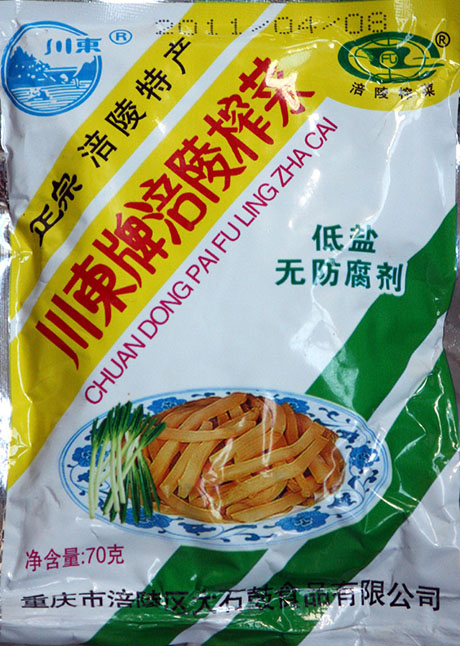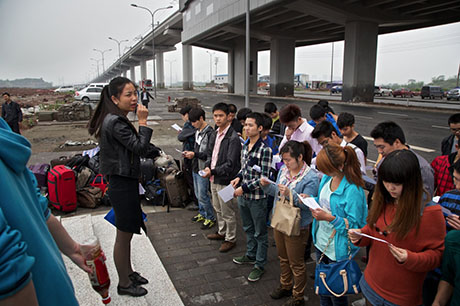
IMAGE: Two heads of whole zha cai with chilli paste; photograph by Sjschen via Wikipedia.
Chinese officials, charged with moving 250 million rural farmers into cities over the next decade under the central government’s sweeping “National Plan for Promoting Healthy Urbanization (2011-20),” have developed a “pickle index” for measuring the movement of migrant workers.
According to the South China Morning Post, the country’s National Development and Reform Commission has found that sales of zha cai, a pickled mustard tuber, provide a better guide to population flows than often unreliable provincial statistical data. As an unnamed planner explained to the Economic Observer:
Under normal circumstances, urban consumption levels of convenience foods such as instant noodles and pickled mustard is essentially constant. Therefore, we can assume that volume changes are mainly caused by a city’s floating population.

IMAGE: Packaged zha cai, via.
Sales reports from the country’s largest pickle company, Chongqing Fuling Zhacai, certainly back up the latest figures from China’s National Bureau of Statistics, which reported in March that the number of migrant workers in the Pearl River Delta and the Yangtze River Delta decreased by 0.5 percent and 0.3 percent respectively last year.
Chongquing Fuling Zhacai’s sales show an even more drastic shrinkage in Southern Chinese mustard consumption, while offering clues to the pickle eaters’ new locations:
Southern China’s share in the company’s sales fell from 49 percent in 2007 to 30 percent in 2011. The share of the central provinces — Henan, Hubei, and Hunan — increased from 2.6 percent in 2009 to 10.6 percent last year, and in other inland provinces by around 2 percentage points.
This ebb and flow of pickle sales from the megacities of Guangdong to the more rural northern provinces suggests that migrant workers are returning home en masse, which could signify either a national slowdown in urbanisation or — as the NDRC hopes — a shift in the geography of growth, away from Shanghai and Guangzhou and toward “second-tier” cities in China’s interior.

IMAGE: Rural jobseekers applying for work at a Foxconn factory on the edge of Chongqing. Photograph by Justin Jin for The New York Times.
In either case, the anonymous NDRC official is concerned that “local governments have yet to sniff the increasingly strong mustard flavour,” and have not adjusted their budgets and “social management system” to cope with return population flow:
For some provinces in central and western China, you have tens of millions of people coming back in the next few years, with all the employment, affordable housing, health care, children’s education, and other issues attendant. It is necessary to begin to plan ahead for this thing.
In response, the NDRC will continue monitoring the “urbanization mustard index,” but is also developing proactive “mustard targets” to guide migrant worker flows. It seems that the humble pickle holds the key to managing the largest urban migration the world has ever seen.
Discovered via the BBC. Most errors courtesy of Google Translate. Previously on Edible Geography, a cupcake index to gentrification.

